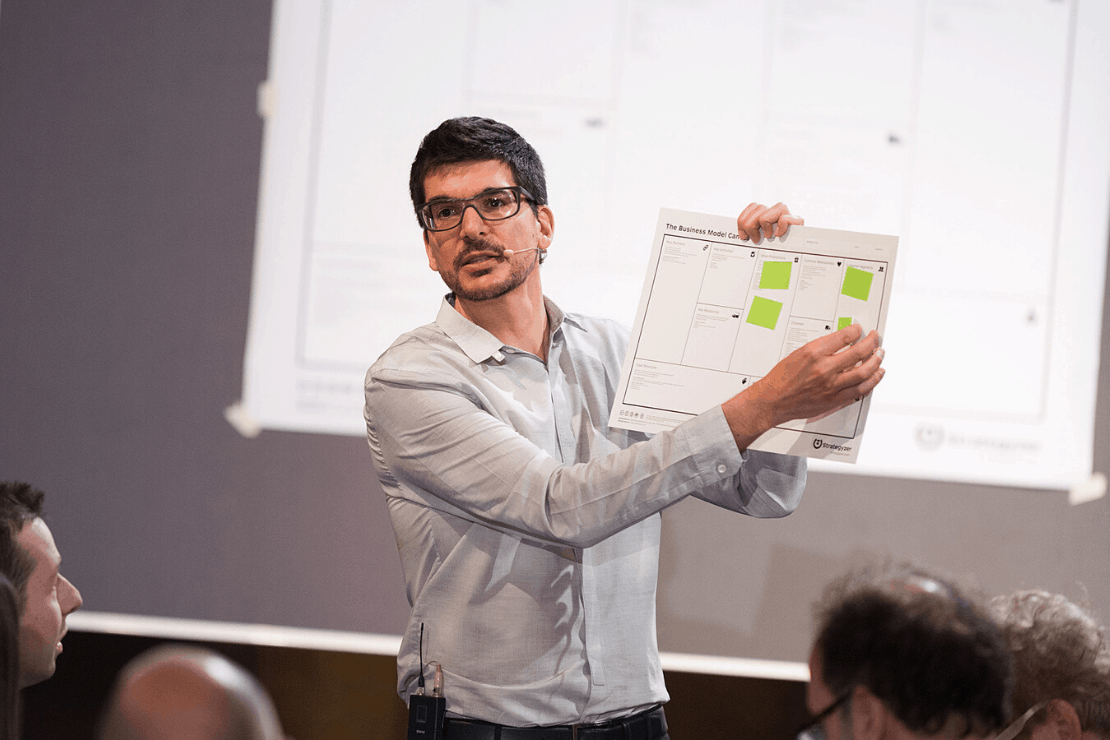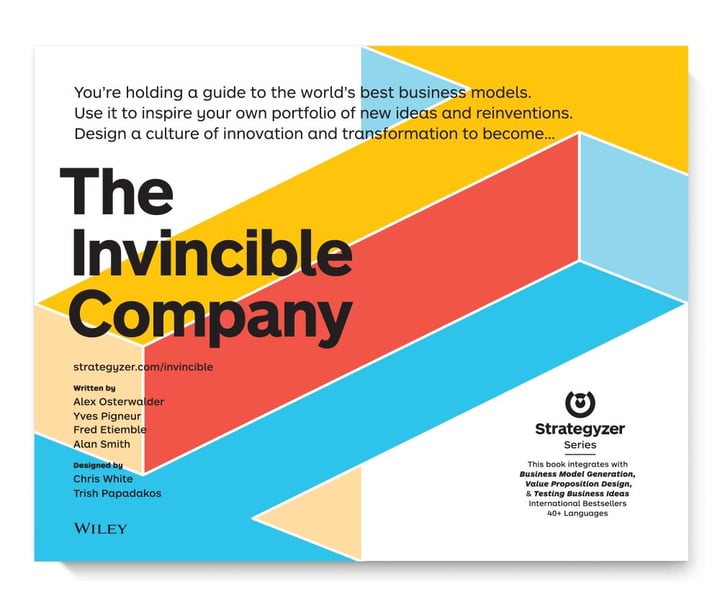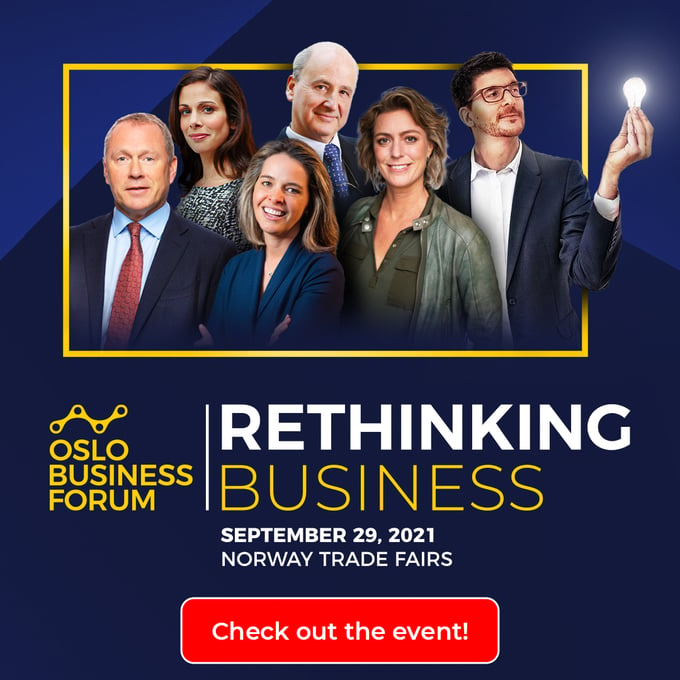One of the most significant risks that businesses and leaders face today is becoming irrelevant as the market and competition change. We've all seen the companies with business models that have crumbled seemingly overnight due to becoming complacent and failing to innovate.
We've invited Alex Osterwalder, lead author of Business Model Generation, to the forum to speak on the topic of reinvention and innovation. This article provides insight into Osterwalder's work and commentary from a Nordic business perspective from Steffen Dyre Hansen, partner and founder of The Assessment Company AS.

The Invincible Company
Osterwalder defines an invincible company as an organization that constantly reinvents itself before it becomes obsolete; it explores the future while excelling and exploiting the present. It's an organization that cultivates both an innovation and execution culture. The invincible company competes through superior business models and transcends industry norms.
In The Invincible Company, Osterwalder et al. focus on how companies can develop an innovation mindset that coexists with an execution culture. He explains that businesses must learn to use the full potential of business model innovation because products and services are easy to copy.
Osterwalder and his team have created a business model pattern library, enabling companies to learn from other industries and geographies and ask better questions. He explains that if you only focus on making your existing business model more efficient, your business will just die more efficiently. It's not enough to get better at what you have been doing. Your firm needs to learn new things to become resilient for the next five or ten years plus.
Nordic Innovation and Execution
We spoke to Hansen about how Nordic companies typically balance innovation and execution in their operations. He said, “Nordic companies are well-positioned because most companies have a flat structure. That is an excellent platform for innovation if you have employees who are creative and solution-oriented. They don’t have to work through multiple managerial layers to present their ideas and be heard. The barrier to knocking on your boss’s door is low in the Nordics. My experience is that we must nurture this culture to keep our companies competitive in a rapidly changing business climate.
“I hear a lot of talk about balancing innovation and execution, and therein lies the problem. The two are often separated, but in reality, both are about the continuous search for creating better customer value. The balancing act is about allocating the resources to create new solutions. However, what is extremely important is that all employees have a responsibility to understand our customers’ “jobs-to-be-done”; no one should feel a disconnect from our customers.
“I believe we are lucky at The Assessment Company because our foundation - the People Lab™ concept - is an innovative idea that has challenged the established industry. The People Lab concept is a huge differentiator in developing individuals and teams and selecting candidates. The core business and culture that we are founded upon and strive to live by every day has a solid innovation foundation. We only hire people who are hungry to learn new skills, adopt new mindsets, and are curious about new ways to create better value for customers.”
Exploit and Explore
Osterwalder explains that companies have to do two things: explore and exploit. Exploration focuses on innovation, while exploitation focuses on refining what already works in the business.
He gives the example of the shifts Airbnb made during the pandemic. In this period, Airbnb had to change its outlook completely. The business let go of 25% of its staff to keep the firm afloat. However, the leaders continued investing in exploration so that innovation could continue and provide a future for the firm. Through this process, Airbnb pivoted to promote accommodation options closer to its clients' homes, in line with lockdown restrictions.
Osterwalder highlights that this exploration capability takes years to build within companies and requires a different set of skills and people than a firm's exploitation arm. Companies that invest for the future during a crisis tend to come out the other side. In some cases, the pandemic has accelerated the success of these companies.
Hansen noted, “The pandemic hit Nordic companies hard, just like the global picture. Governmental responses were pretty good, which helped businesses survive and focus on continuing their operations.
"What we have seen at The Assessment Company is that many of our customers used this time to assess their operations, their future strategy, and business models. Many CEOs have come to us and said, "We have to prepare for post the pandemic because we know that customer needs will change fast."
“We have many examples of innovation initiatives that have stopped during the crisis, but we have also seen that new initiatives have arisen and achieved funding and attention. At the Assessment Company, our Business Design team has worked a lot during the pandemic to understand changing customer needs better, that in return have resulted in new strategies and new business models for our customers.”

How Companies Reinvent
Osterwalder's perspective is that not everything and everyone requires reinvention. There are some things that a company needs to continue doing well in the 'exploit' areas of the business.
During exploration, leaders have to be fearless in testing many new avenues and accept that not everything will work. Innovation is about exploring and adapting constantly. New ideas typically come with high levels of uncertainty and risk because you are in unchartered territory. Leaders can reduce this risk and uncertainty through experimentation, such as talking to prospective clients and adapting the idea until you find an ideal state you believe is viable for the business. By failing fast and adjusting, leaders reduce uncertainty and can feel more confident investing in new ideas.
Hansen commented, “I generally think that most companies are not well-set-up for this kind of “innovation culture,” and that it takes a great effort to change the organizational design to get there. In reality, it is about leadership and providing leaders with the tools and mandates to create this framework for innovation. The problem often lies in a fear that initiatives will fail (and most will) and that this failure does not look good in the financials. When the snowball of business cases and excel sheets start rolling, you know your company is in innovation trouble. I believe that Nordic companies are trying to adapt to new ways of approaching innovation, but that it will take time to change the sometimes conservative and risk-averse leadership.“
Osterwalder stresses that innovating organizations need to pursue multiple ideas to find the one great idea that is an outlier and has the potential to work. He notes that large companies typically need to test 250 projects over three years to find the one outlier that will be successful. In practice, the firm will retire 70% of projects within three months, so that it only invests in 30% of the ideas that showed some evidence of viability in terms of customer demand. Over the next six-month period, the firm retires another 75% of the ideas it pursued to the second stage and continues with the process until the winning idea emerges. Smaller companies may only choose to invest in three to five projects due to the available funding.
Osterwalder argues that it is almost delusional for leadership to believe they can pick a winning idea from the outset; it's about creating the conditions that enable winning ideas to emerge from the innovation process.

Visuals Create Shared Understanding
Osterwalder is a strong proponent of visualizing ideas, that is, encouraging leaders to sketch out their thinking on paper or a screen as they speak so that their teams have a visual artifact of the big idea. He believes it's an underutilized skill in business.
Osterwalder explains that words are typically a lot harder to grasp than a picture, and combining the two helps leaders simplify concepts so their audience can better understand them.
Hansen commented, “Visual thinking is not something that we see a lot of in the Nordics yet, but more and more companies are adopting the skill. However, we know that it takes time for established companies and traditional mindsets to get used to the techniques. “But, I don’t know how to draw” is the most common phrase used when first being introduced to the method. When companies understand that visuals can be fairly simple but effective, the fear passes, and the creative mind can blossom.
“In 2018, we established a Business Design business unit which introduced The Assessment Company to the world of visual thinking. We have not embraced the tools completely, but we see the positives in using visual facilitation techniques with our customers, both in business design processes and strategy facilitation. It is highly effective. At our office in Oslo, we are expanding our facilities with one extra floor, and we are introducing visual thinking tools to our new meeting rooms and creative areas. We are sure that our customers will enjoy these new techniques. It also gives our employees the space and tools to explore their visualization skills and business design capabilities.”
Business Model Innovation in Action
When asked about examples of business model innovation, Osterwalder has a plethora of examples.
Do you remember when Steve Jobs pulled the iPod out of his pocket and told us that this is where we could store our favorite 1,000 songs? Osterwalder calls this type of innovation a "gravity creator." Apple essentially created an ecosystem that its clients were reluctant to leave. It was this, rather than the technology, that was the real innovation.
Nintendo Wii disrupted the game console market differently, launching inferior technology to the Xbox and the Sony PlayStation 2. Why would a firm deliberately launch a product with inferior standards?
Nintendo had discovered a group of underserved gamers who didn't care about graphics and processing powers. These gamers wanted the simplicity and motion of the Wii. The Wii was cheaper to produce, so the console was not subsidized; Nintendo made money on that and the games, unlike its competitors. Osterwalder notes that disruption through inferior technology is typically underexplored as a business model innovation.
The service sector also has great examples of unusual business model reinvention, such as citizenM hotels, which disrupted the hotel industry with a new business model. The company decided to offer luxury accommodation at an affordable price. They built a room factory and shipped highly standardized, high-quality rooms to cities to reduce building and maintenance costs. The company disregarded specific job roles in favor of having staff who were all-rounders, with only one task - to make customers happy. With this model, five staff could manage 180 rooms, excluding cleaning, with excellent service ratings. What's more, the staff turnover was below industry averages due to the level of care the firm gave to its people.
We discussed Nordic innovation with Hansen. He said, "My Nordic perspective is that our technologically mature countries, our flat business structures, as well as the willingness and state backing to invest in innovation, creates a great platform for keeping our region ahead on innovation. But, we need to believe in ourselves and take our place in the global marketplace.
"We also have to give space, funding, and resources to up and coming talent that has the right philosophy for innovation. We have several inspiring examples in Norway. Top of mind is Askeladden & CO, a company specializing in disrupting established business models by creating new companies that compete in the same industry but with a different value proposition and business model. Their philosophy is very inspiring, and their example could lead the way for similar thinking in established companies. I truly believe that the current pandemic has pushed us into thinking more critically about the future and the state of our business models post-pandemic. We've had less time to assess our customers' changing needs to avoid disruption.
Business Model Innovation in Action
Osterwalder believes that many industries are ripe for disruption. He cautions business leaders and society not just to focus on start-ups for innovation. Large companies also have huge potential and the ability to create significant value for stakeholders.
Rather than copying competitors, he encourages all leaders to ask, "what is the right thing to do, even if it seems impossible? How do we make that happen?"
He encourages leaders to be curious and have the proper process and skills in place for exploration.
See Alex Osterwalder live at Oslo Business Forum "Rethinking Business", September 29, 2021!


